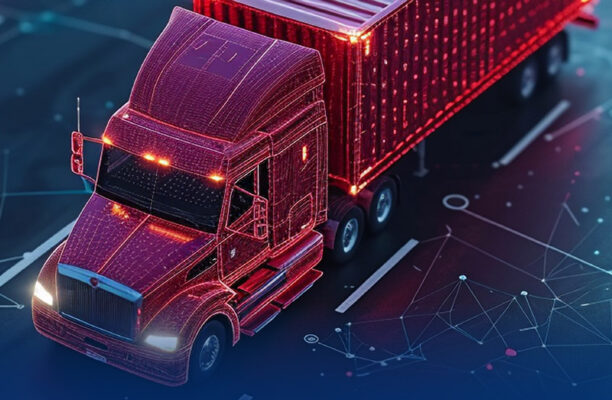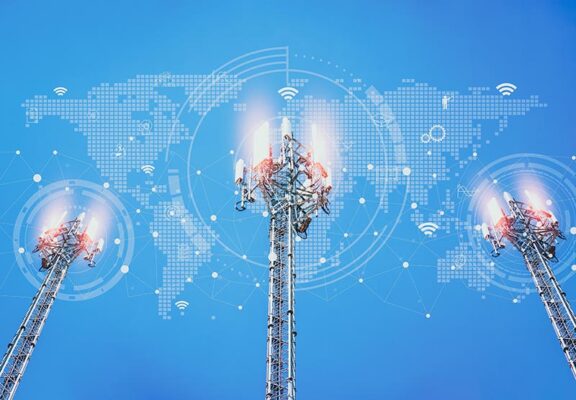Introduction: Transition From Cellular LPWA to 5G Without Fearing Lost Investment
As the world awaits the premiere of 5G, excitement about the future of the Internet of Things (IoT) is growing. Smart cities, mobile health, smart utilities and connected buildings — these are just some of the life-changing applications that are highly anticipated. But do you really have to wait until 5G is ready to deliver these capabilities? (Here’s a hint: No, you don’t.)
A unified network will soon connect nearly everything around us. The global standard for connectivity, 5G, will deliver next-generation wireless broadband technology that impacts not only our smartphones but also our homes, workplaces, cities, vehicles and anything else we can imagine.
Now that a few markets are beginning to trial 5G in the field, many businesses believe that they should hold off connecting tens of billions of “things” on a global scale. Unfortunately, this also means that some organizations willingly follow the fallacy that ubiquitous connectivity required to communicate with a massive volume of sensors cannot be accomplished effectively with the size and reach of current mobile communication capabilities.
Creating such an IoT-enabled network may be challenging, but it is as possible now as it will be in 5G. In 2016, the 3rd Generation Partnership Project (3GPP) introduced two complementary cellular low-power wide-area (LPWA) IoT technologies in Release (Rel) 13: enhanced machine-type communication (Cat M1) and narrowband IoT (Cat NB1). Both of these innovations looked to address longstanding requirements of small machine-type devices such as simplifying antenna design and enhancing coverage to link 15 dB over existing LTE and 20 dB over existing GPRS. Plus, power-saving operating modes should be improved to extend battery life for approximately 10 years while penetrating building infrastructure reliably.
Two years later, 3GPP’s Rel 13 is helping companies build products that are highly cost- and size-effective and suitable for large-scale rollouts. Plus, the features needed to keep pace with the evolution of IoT-driven applications are within reach.
In this white paper, we’ll explore how these IoT capabilities can help businesses scale up from cellular LPWA to 5G connectivity with a clear, progressive path. Plus, we’ll share how you can protect existing IoT investments now while preparing for a 5G world.
Tap New Revenue
Cellular LPWA standards delivered in 3GPP Rel 12 and 13 are already playing an integral role in the IoT. From connected vehicles to smart cities, businesses can open up unprecedented value and new revenue streams.
It is clear that low-power and higher in-building penetration can enable new application types never thought possible before. For example, a parking meter in an underground parking structure can now remain reliable and reachable by the closest cellular base station. As a result, parking service providers have a distinct opportunity to enhance customer experience and reap new revenues.
Another enabler of a new revenue stream is voice communications. The ability to quickly establish and sustain verbal communication is essential in use cases such as surveillance, elderly monitoring, egress control and personal trackers. However, this technology is a complex issue for narrowband connections.
Reliable and clear voice transmissions require substantial resources in terms of processing power for encoding and decoding as well as spectrum to transmit and receive. Whereas LTE Cat NB1 does not support voice connections, its counterpart (Cat M1) does, making Cat M1 the lowest-power wide-area standard to support it and bringing an endless range of new applications.
Take, for example, the concept of a connected hiker’s vest embedded with a voice-supporting tracking device. This garment allows the hiker to talk to first responders during an emergency, where no other form of communication is possible. Such a vest is possible because low-power requirements for LTE Cat M1 enable light-battery power, while voice support is achieved through speakers and a microphone embedded in the garment. The standard for voice support in LTE is called Voice over LTE (VoLTE).
LTE-M and NB-IoT device shipments will see massive growth in the near future, overtaking unlicensed LPWA (U-LPWA) device shipments by 2020.1
Mobile Experts Inc. July 2017.
Ensure Undisrupted Connectivity with Seamless Cellular Reselection
As part of Rel 13, 3GPP specified a radio interface optimized for machine-type traffic. This technology, Cat NB1, established a foundation for IoT connectivity by scaling down complexity, minimizing battery consumption, deepening coverage for difficult and remote conditions, and increasing device density.
Cat NB1 is designed for infrequent and short messages between the device and the network, which addresses the needs of common applications and use cases for the IoT. However, this signal can be disrupted when jumping from one cell to another. On the road to 5G, 3GPP looks to address this concern for certain classes of solutions, devices and innovations focused on an all-in 5G world by introducing cell reselection.
Secure Continuous Cellular Reselection Before and After the Launch of 5G
Improvements planned on the road to 5G cover limited cellular reselection by increasing the depth of radio coverage to strengthen the power levels of signaling channels and repeat transmissions. This enhancement also allows receivers to correctly resolve the message sent. At the same time, the trade-off between repeating signal transmissions and consumption of battery — as well as the time between battery recharge and replacement — is substantially minimized.
To ensure that connectivity between devices, business applications and servers or other devices, organizations should consider crucial safeguards for secure and agile transmissions:
1. Real-time subscription switching through remote provisioning: Simplification of long-term maintenance and management allows the switching of preloaded profiles that are flexibly integrated with multiple network carriers, so the optimal cell profile is selected for the moment and application.
2. Scaling of LPWA devices: Enhanced LTE standards for Cat M1 and Cat NB1 enable devices, such as sensor net nodes, to achieve critical cost and size targets while easing device installation and manufacturing.
3. Continuous security updates: The IoT network should be continuously scanned for security risks and improved to tighten those gaps to comply with the global criteria set by mobile network operators.
Enrich Communications with Voice Over LTE (VoLTE) Messaging
Borrowing from traditional internet connections, the expectation for Voice over LTE (VoLTE) messaging is quite simple. Users dial the number of the intended digital destination, establish an IP connection, engage in conversation and sustain the connection — even if there’s absolute silence — until someone hangs up.
Businesses that gradually adopt VoLTE capabilities are positioned to realize the full promise of the IoT. Voice capabilities offer a natural and easy experience when receiving input and delivering information, especially when eyes and hands are too busy to enter and read prompts. This approach proves cost-effective when IoT applications accept voice commands, removing the need for expensive touchscreens and hardware.
Build Up VoLTE Capabilities in Preparation for 5G
3GPP quickly realized that VoLTE is a fundamental requirement for maturing IoT adoption. Rel 13 phases this capability into Cat M1 with a complete set of standards that allow the human voice to travel over LTE and packets without additional trunks and connections.
To manage the speed, quality, volume and signaling associated with VoLTE, companies should weigh their IoT strategies and technology investments based on three critical requirements:
Longevity: Choose devices, modules and applications that have matching life cycles, require minimal field support and lower the total cost of ownership of the entire IoT network. Such proactive planning ensures that the proper API is available if a replacement is needed in the future.
“Design once, use anywhere” mindset: Support cellular technologies with a family form factor approach. The single design enables organizations to address the needs of a variety of regional markets. The components of the IoT network are interchangeable because they all exhibit the same size and shape, pin-to-pin compatibility and software interface.
Reliable radio-frequency performance: Advance radio-frequency design, equipment and process technology by lowering the power consumption of existing wearable devices to ensure undisrupted connectivity across the IoT network.
Up to 12% of IoT applications will capture voice capabilities by 2022.2
Deliver New IoT Features through Mass Deployment Multicasting
Mapping devices directly to data management systems and applications is a burdensome hurdle when fulfilling the full promise of the IoT. It’s time-consuming, tedious and error-prone.
Each device needs to be programmed individually to support highly anticipated capabilities, such as data-driven analytics, automated action triggering and two-way communication. The process can take as much as five minutes to install one device. Industrial environments managing thousands of assets, for example, can end up dedicating 84 hours to set up a new network of 1,000 devices.
Accelerate Device Onboarding and Updating While Improving Resource Efficiency
To onboard, update and message devices with greater efficiency and speed, 3GPP is integrating multicasting standards and features on the road to 5G. This level of enablement is highly beneficial for IoT use cases because it provides a way to send the same information to either a specific set of devices and applications or across the entire network all at once.
Multicasting minimizes specification changes by supporting single-cell point-to-multipoint coverage. By leveraging LTE broadcasting system architecture, enhancements to air interface improve radio efficiency and reduce information latency. Broadcasting new information or features can be dynamically added or adjusted cell by cell based on the user’s distribution commands.
By combining multicasting with a data-centric IoT platform, organizations can open up a central information pipeline to all legacy and modern devices and applications and tightly integrate them regardless of communication protocol. Companies can access a wide selection of drivers on-demand and move data bidirectionally and simultaneously. More importantly, they can experiment with this new concept in a limited way now to prepare for a full-scale rollout when 5G is operational.
“While over 70% of companies plan to have 5G use cases in production by 2021, businesses in manufacturing, energy and utilities, public transport and financial services are most likely to have theirs in production by 2020.”
“The Industry Impact of 5G,” Ericsson, January 2018
Conclusion: Guide Your IoT Capabilities Today Toward a 5G Future
5G is expected to turn the hyperconnected IoT landscape into a real-time, massive force in innovation. This next-generation form of wireless connectivity will undoubtedly unleash new possibilities for IoT initiatives such as Industry 4.0, autonomous vehicles, smart buildings, smart cities and connected applications that touch every organizational function, supplier and consumer.4
In this paper, we have briefly reviewed some of the IoT-specific developments enabled by 3GPP Rel 12 and 13, as well as additional enhancements proposed by Rel 14. Although adoption has been modest so far, the economic value of this technology will continue to grow as specific use cases rely on better VoLTE performance and other attributes.
Although Rel 15 will make 5G an integral part of 3GPP’s efforts, the need for 4G connectivity will not end. In fact, 4G VoLTE will remain the voice-enabling technology in 5G for the foreseeable future as the new radio network is primarily resigned to millimeter-wave frequency bands. 5G will take on the heavy lifting for outdoor cellular communications while 4G continues to be the standard of choice for in-building use. From our perspective, 4G will continue to evolve along with and after Rel 15, which enables your 4G IoT deployments to reap business and technical benefits. The key to achieving these advantages is to make smart choices now, especially when you select an IoT cellular module vendor.
There are a lot of opportunities that will come when 5G arrives. However, it is not a convincing argument to delay any new IoT advancements in the meantime. Businesses will actually need these next few years to evolve their IoT capabilities with the capabilities laid out by 3GPP’s Rel 12 and 13, so they can pull the most significant benefit from their 5G investments quickly and without disruption.
Endnotes
- Mobile Experts Inc. July 2017.
- Strategy Analytics. February 2016.
- “The Industry Impact of 5G,” Ericsson, January 2018.
- “IDC FutureScape: Worldwide IoT 2018 Predictions,” IDC, October 2017.


